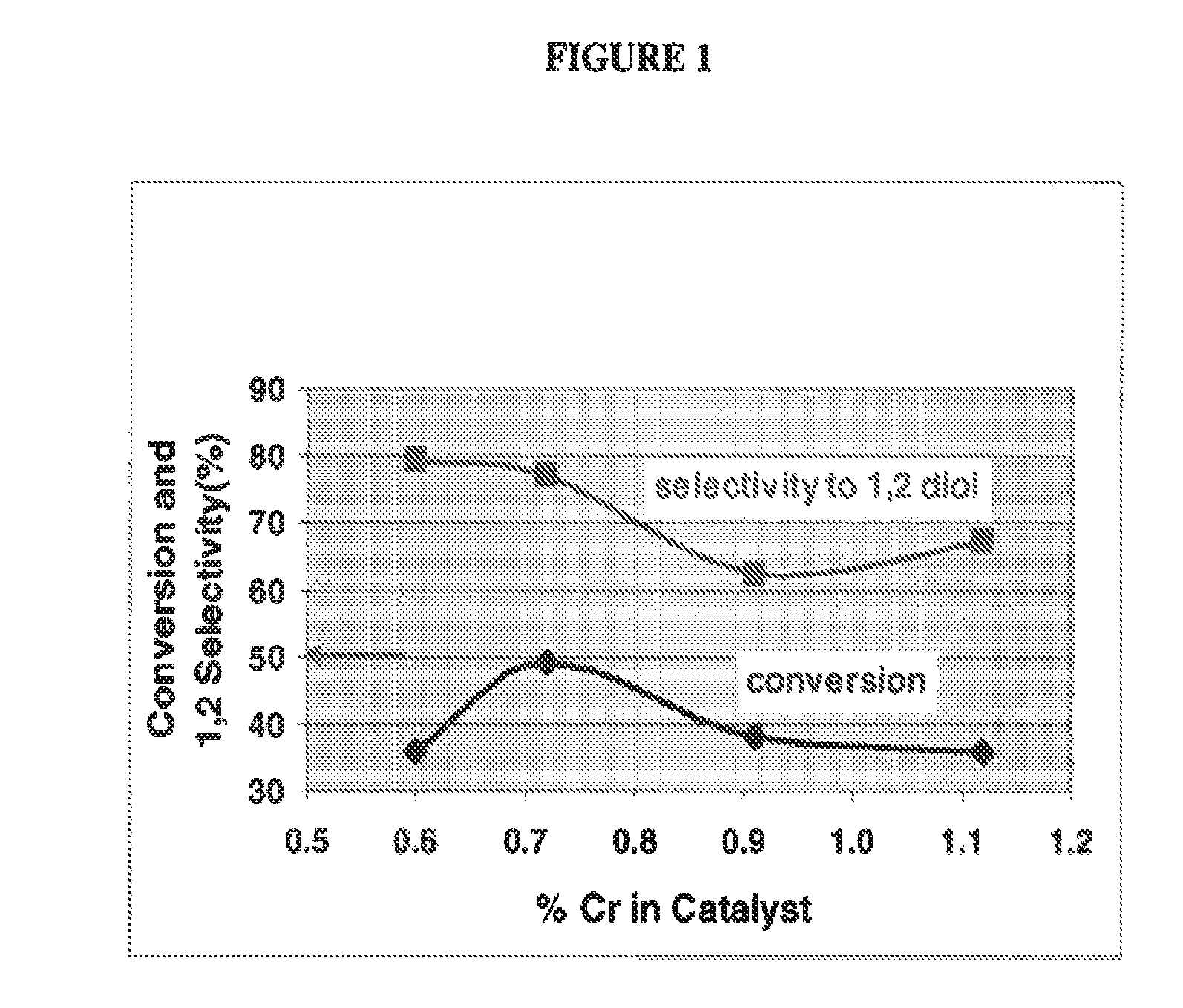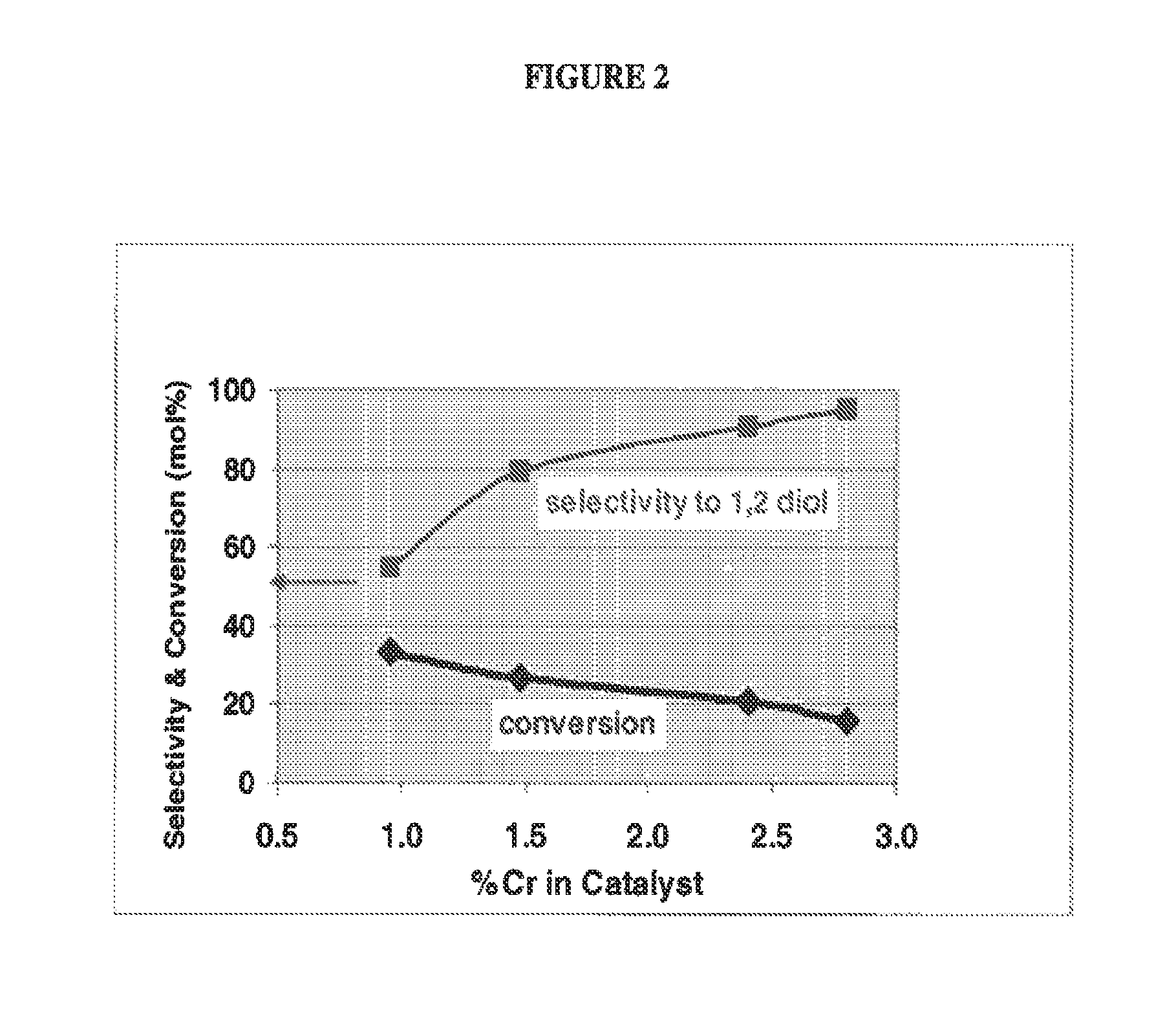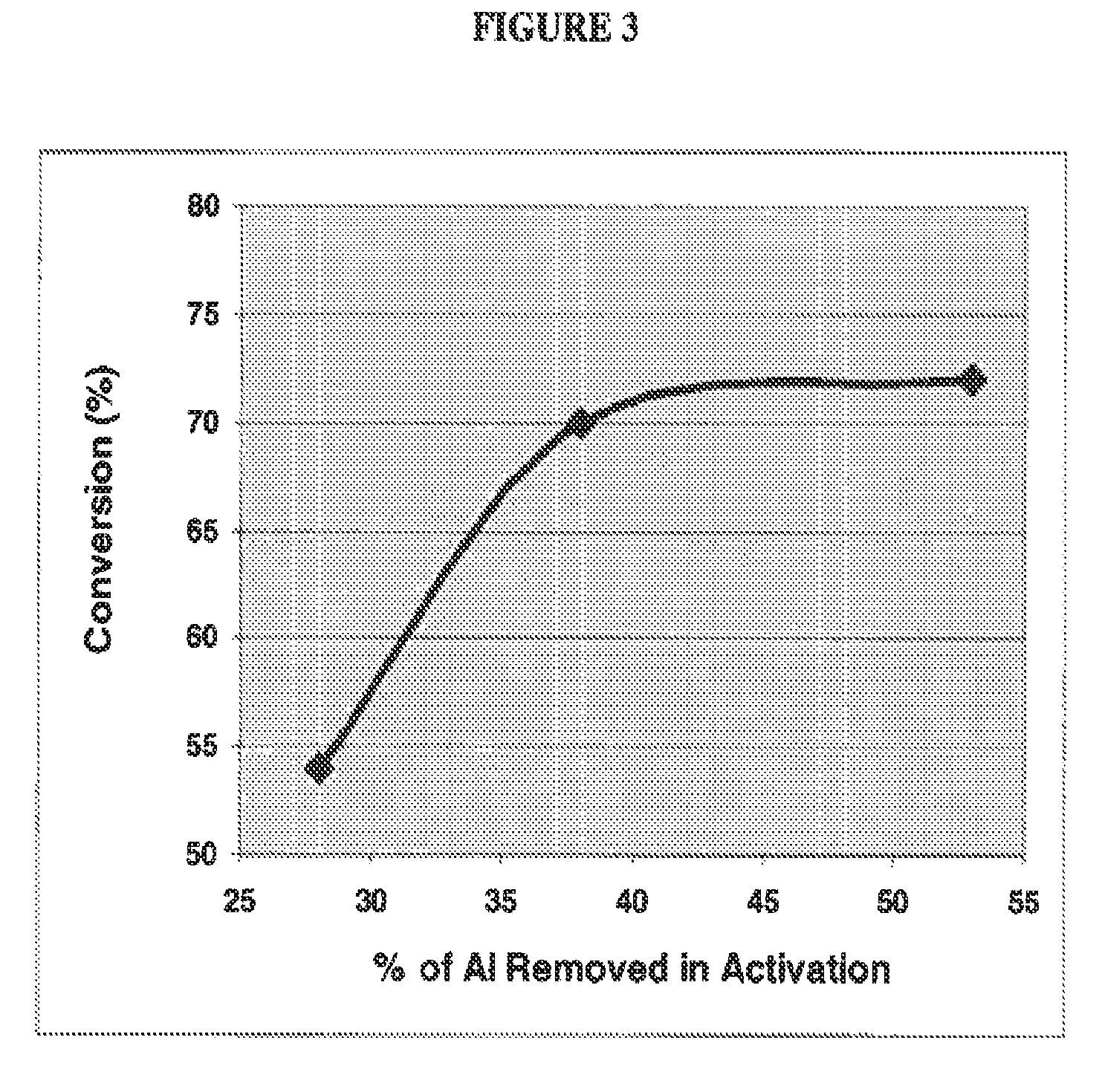Process for making 1, 2-propane diol from hydrogenation of glycerol
a technology of glycerol and hydrogenation, which is applied in the preparation of oxygen-containing compounds, physical/chemical process catalysts, metal/metal-oxide/metal-hydroxide catalysts, etc., can solve the problems of increasing noise emission, requiring further processing and purification using generally complex processes, and affecting the efficiency of the engine. , to achieve the effect of high aluminum leaching and enhanced selective production
- Summary
- Abstract
- Description
- Claims
- Application Information
AI Technical Summary
Benefits of technology
Problems solved by technology
Method used
Image
Examples
example 1
[0057]A precursor alloy was made by conventional melting and mixing techniques at a composition of 50% Cu-50% Al. The cooled alloy was crushed and ground to a powder with average particle size of 15 microns. The alloy was converted to a catalyst by gradual addition, with stirring, to a leachant solution comprising 23% aqueous NaOH, the addition being controlled to achieve a temperature not exceeding 80° C. The mixture of leachant and alloy was stirred for an additional 1 hour while maintaining 80° C. After this activation period the stirring of the mixture was discontinued to allow settling of catalyst particles and the removal of excess byproduct solution (NaOH and sodium aluminate) from the settled catalyst. The catalyst was then washed with water (by cycles of water addition, stirring, settling and spent solution removal) until the pH of the aqueous phase reached 9.
[0058]The finished catalyst product had an average particles size of 14 microns (via Malvern analysis) and a chemica...
example 2
[0059]A catalyst using the alloy and activation as described in Example 1 was prepared, with the modification of adding 3.16 g CrCl3 to the leachant solution for 300 g of alloy to be activated, and stirring the NaOH solution and CrCl3 to ensure dissolution of the Cr species before use.
[0060]The finished catalyst product had an average particles size of 38 microns (via Malvern analysis) and a chemical composition of 0.6% Cr, 1.4% Al, and 97.7% Cu.
example 3
[0061]A catalyst using the alloy and activation as described in Example 1 was prepared, with the modification of adding 4.43 g CrCl3 to the leachant solution for 350 g of alloy to be activated, and stirring the NaOH solution and CrCl3 to ensure dissolution of the Cr species before use.
[0062]The finished catalyst product had an average particles size of 36 microns (via Malvern analysis) and a chemical composition of 0.7% Cr, 1.6% Al and 97.3% Cu.
PUM
| Property | Measurement | Unit |
|---|---|---|
| pressure | aaaaa | aaaaa |
| temperature | aaaaa | aaaaa |
| pressure | aaaaa | aaaaa |
Abstract
Description
Claims
Application Information
 Login to View More
Login to View More - R&D
- Intellectual Property
- Life Sciences
- Materials
- Tech Scout
- Unparalleled Data Quality
- Higher Quality Content
- 60% Fewer Hallucinations
Browse by: Latest US Patents, China's latest patents, Technical Efficacy Thesaurus, Application Domain, Technology Topic, Popular Technical Reports.
© 2025 PatSnap. All rights reserved.Legal|Privacy policy|Modern Slavery Act Transparency Statement|Sitemap|About US| Contact US: help@patsnap.com



